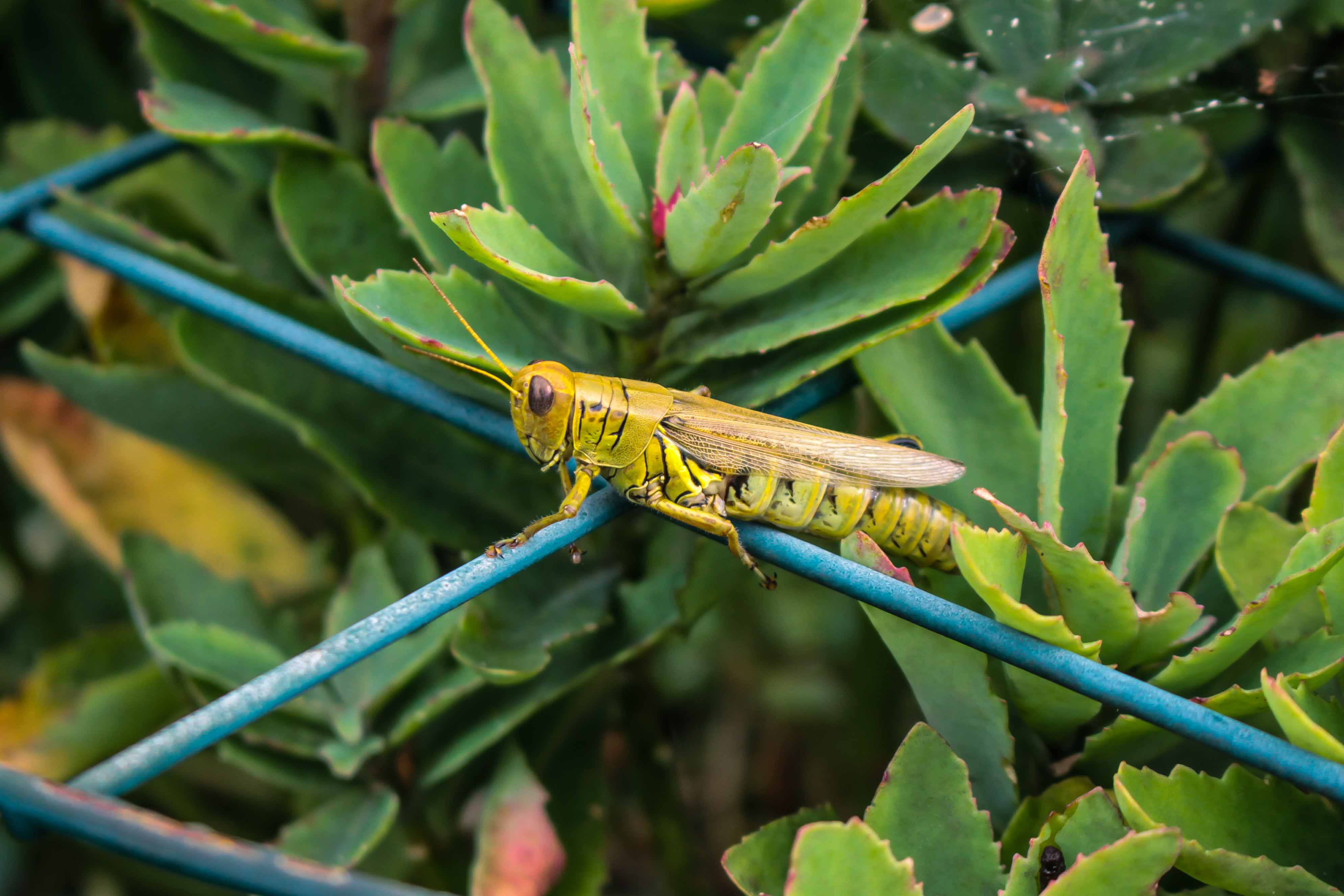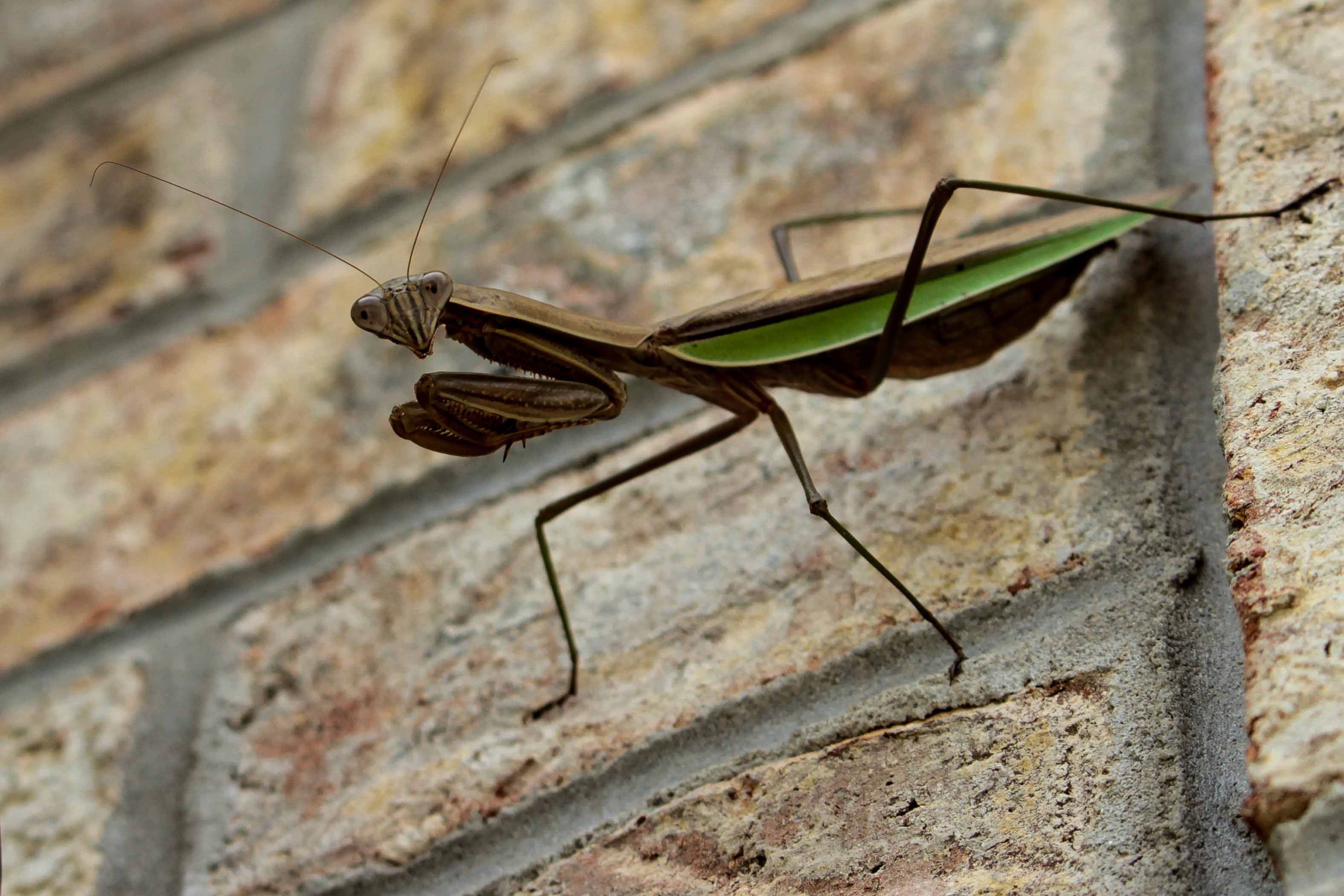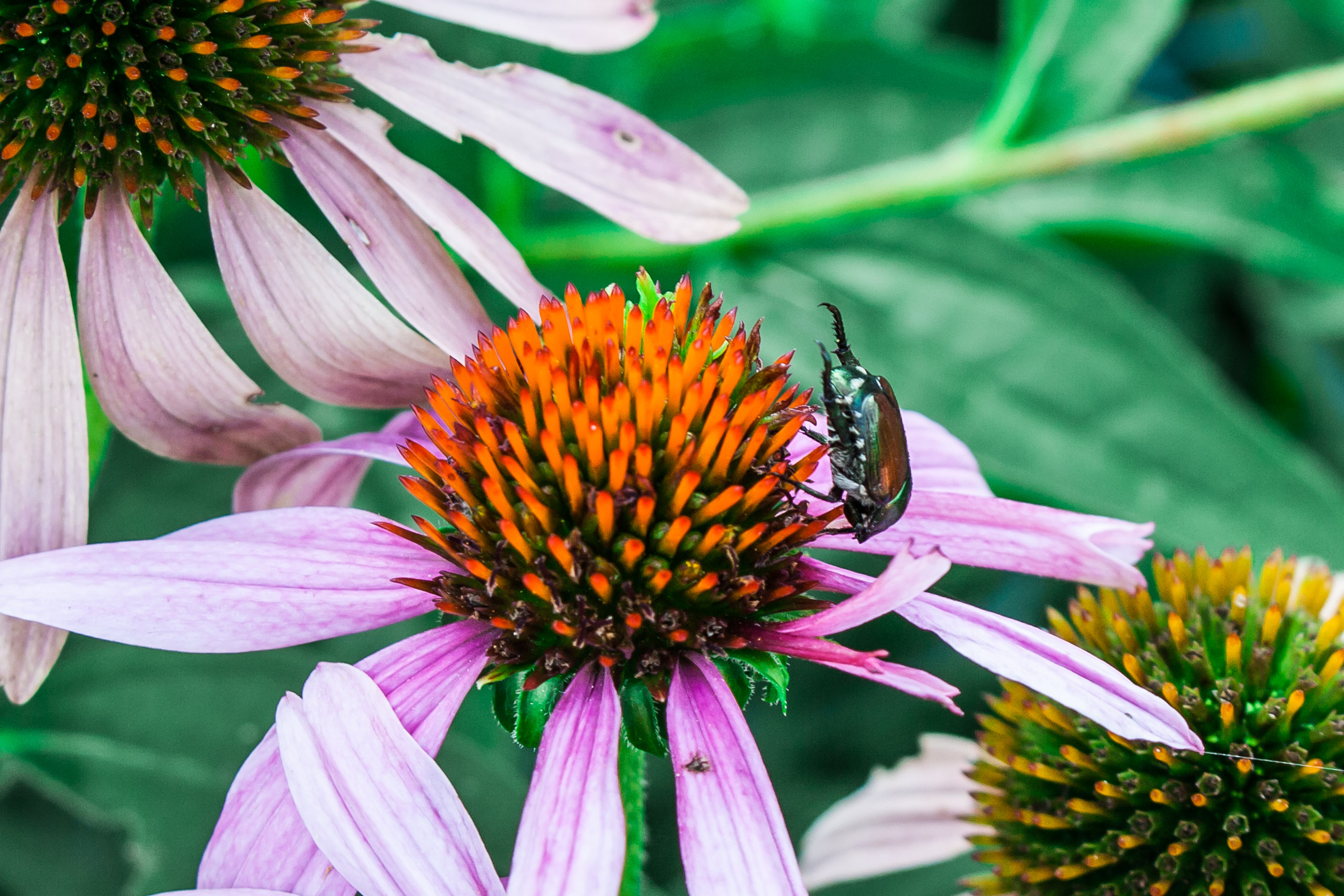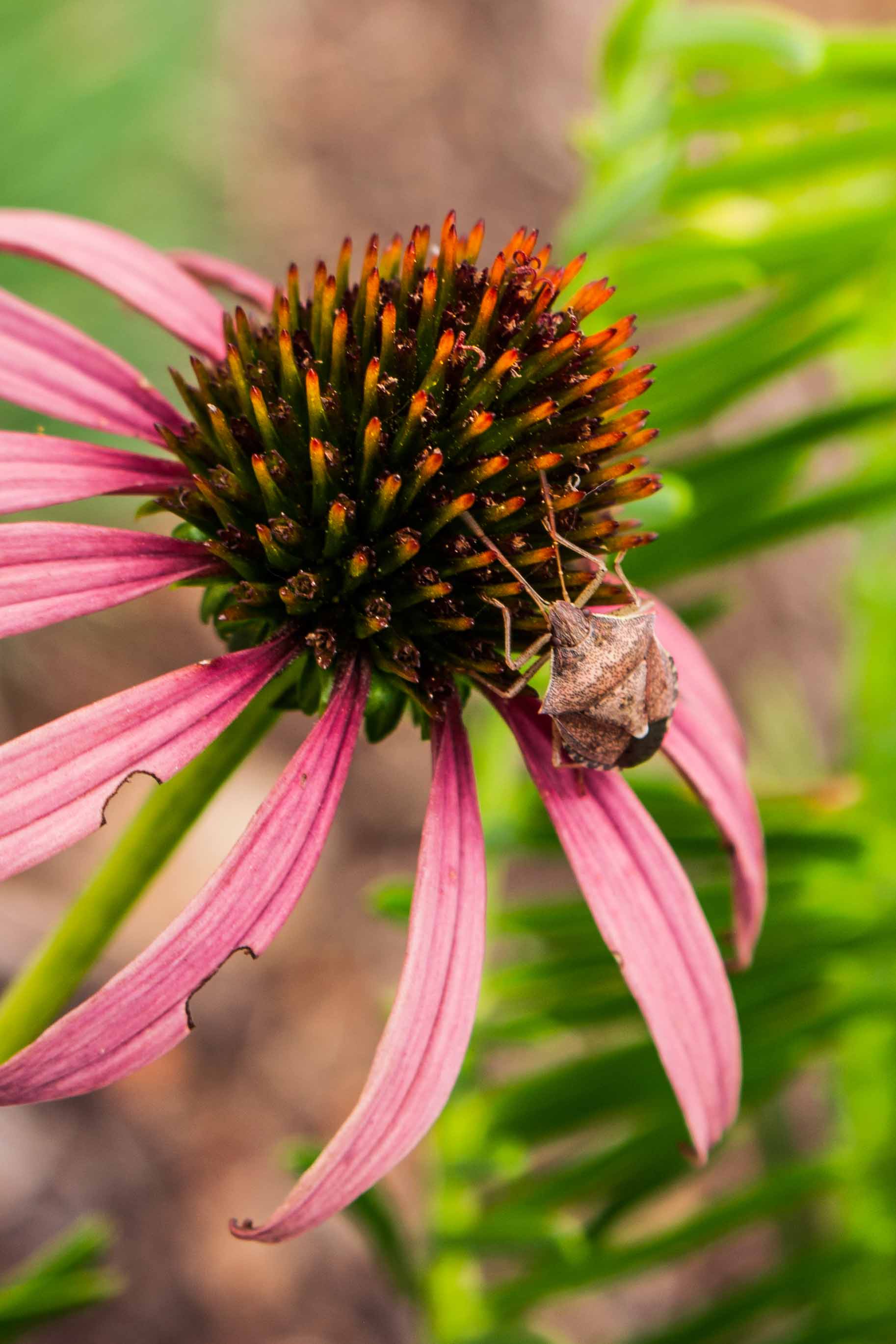Myths About Cold Winters and Fewer Bugs- by R. Lieber
For mosquitoes it's definitely a myth, as anyone living in Maine or Alaska can tell you. Mosquitoes are quite adept at surviving most winters no matter how cold. The truth is their number soars with a wet spring, not a warm winter. Not all bugs are bad. We want predator bugs to thrive and help us control the bugs that chew leaves and flowers, and damage our vegetable patches. These include the Ladybug, praying mantis, assassin bugs, some stink bugs, spiders and parasitic wasps. Pollinators are also good bugs and include bees, butterflies, moths, hover flies, some wasps. Successful gardens need both pollinators and predators. Collectively, these are the good bugs we are talking about. Gardening organically helps to encourage the good bugs to stay and grow in the garden, including the bees which seem to be getting scarce. In turn, predator bugs are great allies in ridding our gardens of the insect pests. In an upcoming article we'll be talking about what many "good" bugs look like so they can left alone to do their job in the garden. Bad and good bugs can be affected differently by extremely cold winters, especially during and freeze and thaw cycles. Bad bugs seem to do just fine after a bad winter but good bugs don't always do as well. You will need to be prepared to act to protect tender plants and food plants from pests when weather conditions have been harsh. For plants as well as many predatory insects, just surviving severe cold snaps isn't enough. If they are fooled into spring wake up activity by a thaw, both plants and predators will become active and not have the ability to keep going as the cold returns. Here in Tennessee, thaws happen every winter at least once, sometimes 3 and 4 times before real spring comes. Bulb and plant tips will come up in early January, only to be browned and damaged by the next brutal near zero nights. The good critters also get fooled by the warm days and come out of hibernation. Bees are a good example. The bees have used pollen and honey or nectar stored in their hives, especially during warm spells where they become active. They may not have enough stores to get them to the first flowering trees and plants for nectar. In the same way predators bugs will also wake and look for something to eat but find few of the bad bugs during a short thaw. They don't have much reserve to last through repeated searches for food and will die from exposure and hunger.
The sad truth for gardeners is that many predator bugs starve before they can find other insects to prey on. In the real springtime there are very few of them left to keep the emerging garden raiders in check. Many of the bad bug's eggs won't die off unless the winter chills go far below zero degrees and stay cold for prolonged periods. That kind of cold would also be deadly for many southern plants. The myth may be reinforced in our minds because it seems like everything is doing well in the garden in mid spring. A wet winter may actually help dissolve and wash away some of the insect eggs, but the tiny garden raiders survive to begin rapidly multiplying as good weather returns. There may be fewer full grown insects to see, but we can't see all the emerging tiny bad bugs yet. While we happily believe that an arctic winter was enough to kill everything, the population explosion grows. Sadly, the bugs haven't heard the myth that they should be dead and instead are happily chewing and sucking while hiding underneath the leaves in the bonanza of plants we have tended for them. While much has been made of the "polar vortex" cold we've had, scientists have found only few bad bugs have shown any real mortality from it: corn earworms, kudzu bugs and gypsy moth caterpillars.
It's said you cannot freeze a cockroach to death (science has backed this up!) and there are other nuisance bugs with similar qualities. Their cold resistance or tolerance allows them to get a head start on plant predation with fewer natural enemies waiting after bitter cold winters. Instead, the worst conditions for plant chewing bugs would include a late, dry spring because it means fewer will survive, or thrive, and then there will be less time to grow many generations by summer. Often enough predators will be on hand to eat them as well. One of the few ways insect populations can be reduced is through a combination of dry seasons starting with a dry fall, a moderately cold winter without snow as an insulator, followed by a late but dry spring. Predators will often survive these conditions as well or better than the bad bugs they prey on, and that will keep their populations relatively low for quite some time after. Unfortunately this may not be something to wish for, since here in East Tennessee it can mean another drought setting in. What's a gardener to do now that we know winters don't benefit us as much as we thought?
In future articles we'll be discussing growing a garden to support the good bugs while living with the bad, and about giving all pollinators a place to thrive. |


 An often repeated pearl of wisdom in the gardening world, and one heard nearly every winter, is that a cold snap will "kill all the bugs". Or, conversely, an unseasonably warm winter will mean that the garden will be chewed to bits come the next growing season. I'm sure I am not alone in having gone along with believing that cold winters means no bugs for quite some time. When a good friend asked me if I knew that this bit of folklore was a myth, it surprised me. So, like the doubting Thomas I am, I looked it up. Sure enough, I discovered winter cold and bug numbers are not related the way that people thought!! Of course we need to add that it will matter which bugs you are talking about. So what does a cold winter really mean for those of us looking to have a garden here in Blount County?
An often repeated pearl of wisdom in the gardening world, and one heard nearly every winter, is that a cold snap will "kill all the bugs". Or, conversely, an unseasonably warm winter will mean that the garden will be chewed to bits come the next growing season. I'm sure I am not alone in having gone along with believing that cold winters means no bugs for quite some time. When a good friend asked me if I knew that this bit of folklore was a myth, it surprised me. So, like the doubting Thomas I am, I looked it up. Sure enough, I discovered winter cold and bug numbers are not related the way that people thought!! Of course we need to add that it will matter which bugs you are talking about. So what does a cold winter really mean for those of us looking to have a garden here in Blount County? Unfortunately predator bugs have been more damaged by recent severe winter cycles. Some predators, like praying mantis, depend on new generations hatching in spring. Their egg cases are exposed to the open air and repeated freezing can damage or kill the eggs before they hatch out. Many predators, like parasitoids (wasps that prey on insects and caterpillars) may be less cold hardy. Often predators will lack enough reserves to survive multiple wake and hibernation cycles if the bugs they normally eat have not emerged. Parasitic wasps for the Emerald Ash Borer (EAB) are a prime example of this. Both the wasp and EAB are hurt by cold, but the wasp dies off more readily.
Unfortunately predator bugs have been more damaged by recent severe winter cycles. Some predators, like praying mantis, depend on new generations hatching in spring. Their egg cases are exposed to the open air and repeated freezing can damage or kill the eggs before they hatch out. Many predators, like parasitoids (wasps that prey on insects and caterpillars) may be less cold hardy. Often predators will lack enough reserves to survive multiple wake and hibernation cycles if the bugs they normally eat have not emerged. Parasitic wasps for the Emerald Ash Borer (EAB) are a prime example of this. Both the wasp and EAB are hurt by cold, but the wasp dies off more readily. In general, the bugs that eat and damage cultivated plants survive cycles of freezes better. They often don't come out of hiding until much longer periods of warmth, and then they multiply quickly on the new tender plant growth. Most plant damaging bugs hunker down under tree bark, burrow below the frost line in the soil, or hide under leaf litter and mulch that also keeps plants from being damaged. Many have huge egg caches that have at least a few survivors in even the coldest winters. The deep cold snaps only affect a few of the eggs or overwintering adult insects in these hiding places. Without a lot of predators to keep them in check they can become a big problem, but it doesn't show until summer is imminent.
In general, the bugs that eat and damage cultivated plants survive cycles of freezes better. They often don't come out of hiding until much longer periods of warmth, and then they multiply quickly on the new tender plant growth. Most plant damaging bugs hunker down under tree bark, burrow below the frost line in the soil, or hide under leaf litter and mulch that also keeps plants from being damaged. Many have huge egg caches that have at least a few survivors in even the coldest winters. The deep cold snaps only affect a few of the eggs or overwintering adult insects in these hiding places. Without a lot of predators to keep them in check they can become a big problem, but it doesn't show until summer is imminent. If you haven't already followed advice from previous Hands In the Dirt articles to clean up the leaves, stems and other debris in the garden, get out there now (February and March) and spring clean early. That is the best time to do it, especially before the real spring warmth has set in.
If you haven't already followed advice from previous Hands In the Dirt articles to clean up the leaves, stems and other debris in the garden, get out there now (February and March) and spring clean early. That is the best time to do it, especially before the real spring warmth has set in.